Fast Synchronization Scheme Using 2-Way Parallel Rendezvous in IEEE 802.15.4 TSCH †
Abstract
1. Introduction
- Our proposal permits a fast synchronization of the network, thereby reducing the energy consumed until the network synchronization of each node.
- Further, our proposal reduces network formation time and helps provide immediate access to data.
- DRL–TSCH, the proposed technique, includes four techniques, namely (1) two-way transmission strategy (2) distributed radio listening through two-way connections (3) hopping channel calculation method (4) ERB packet transmission.
- The experiment, which utilizes 10 and 25 openmote-cc2538, compares various techniques to evaluate synchronization speed, energy consumption, and pre-synchronization traffic.
2. Background
2.1. TSCH Synchronization
2.2. EB Scheduling Algorithm
2.3. Parallel Rendezvous Strategy
3. The Novel Proposal: Distributed Radio Listening – TSCH
3.1. 2-Way Strategy
3.2. Distributed Radio Listening Through 2-way Connections
3.3. Hopping Channel Calculation Method
3.4. ERB Packet Transmission
4. Experimental Evaluation
4.1. Experiment Setup
4.2. Experiment Result
4.2.1. Nine-Hop Linear Topology
4.2.2. 5 × 5 Grid Mesh Topology
5. Conclusions
Author Contributions
Funding
Conflicts of Interest
References
- 802.15.4e-2012-IEEE Standard for Local and metropolitan Area Networks--Part 15.4: Low-Rate Wireless Personal Area Networks (LR-WPANs) Amendment 1: MAC Sublayer; IEEE: Piscataway, NJ, USA; pp. 1–225.
- 802.15.4-2006- IEEE Standard for Information Technology-- Local and Metropolitan Area Networks-- Specific Requirements-- Part 15.4: Wireless Medium Access Control (MAC) and Physical Layer (PHY) Specifications for Low Rate Wireless Personal Area Networks (WPANs); IEEE: Piscataway, NJ, USA; pp. 1–320.
- 802.15.4-2015-IEEE Standard for Low-Rate Wireless Networks; IEEE: Piscataway, NJ, USA; pp. 1–709.
- HART Communications Foundation. HART Field Communication Protocol Specification; HFC_SPEC-12, Revision 6.0; HART Communications Foundation: Austin, TX, USA, 2001. [Google Scholar]
- International Society of Automation (ISA) Standard. Wireless Systems for Industrial Automation: Process Control and Related Applications; ISA-100.11 a-2009; International Society of Automation (ISA) Standard: Research Triangle Park, NC, USA, 2009. [Google Scholar]
- Vilajosana, X.; Watteyne, T.; Vucinic, M.; Chang, T.; Pister, K. 6TiSCH: Industrial Performance for IPv6 Internet of Things Networks. Proc. IEEE 2019, 107, 1153–1165. [Google Scholar] [CrossRef]
- Vilajosana, X.; Pister, K.; Watteyne, T. Minimal IPv6 over the TSCH Mode of IEEE 802.15.4e (6TiSCH) Configuration. BCP 210, RFC 8180. May 2017. Available online: https://www.rfc-editor.org/info/rfc8180 (accessed on 23 September 2019).
- García Algora, C.M.; Alfonso Reguera, V.; García Fernández, E.M.; Steenhaut, K. Parallel Rendezvous-Based Association for IEEE 802.15.4 TSCH Networks. IEEE Sens. J. 2018, 18, 9005–9020. [Google Scholar] [CrossRef]
- Reguera, V.A.; Guerra, E.O.; Algora, C.M.G.; Nowé, A.; Steenhaut, K. On the upper bound for the time to rendezvous in multi-hop cognitive radio networks. In Proceedings of the IEEE 21st International Workshop Computer Aided Modelling Design Communication Links Network (CAMAD), Toronto, ON, Canada, 23–25 October 2016; pp. 31–36. [Google Scholar]
- Flores, L.C.; Reguera, V.A.; Guerra, E.O.; Mora, D.R.S.; Garrido, F.B.; Lopez, E.A. Expected time to rendezvous in multihop cognitive radio networks. In Proceedings of the 2017 IEEE 9th Latin-American Conference on Communications (LATINCOM), Guatemala City, Guatemala, 8–10 November 2017; pp. 1–5. [Google Scholar]
- Bae, B.; Chung, S.; Lee, H. Distributed Radio Listening Synchronization Using Rendezvous Chain Based on TSCH. In Proceedings of the 2019 11th International Conference on Ubiquitous and Future Networks (ICUFN), Zagreb, Croatia, 2–5 July 2019; pp. 283–288. [Google Scholar]
- Duy, T.P.; Kim, Y. An efficient joining scheme in IEEE 802.15.4e. In Proceedings of the 2015 International Conference on Information and Communication Technology Convergence (ICTC), Jeju, South Korea, 28–30 October 2015; pp. 226–229. [Google Scholar]
- Vogli, E.; Ribezzo, G.; Grieco, L.A.; Boggia, G. Fast join and synchronization schema in the IEEE 802.15.4e MAC. In Proceedings of the 2015 IEEE Wireless Communications and Networking Conference Workshops (WCNCW), New Orleans, LA, USA, 9–12 March 2015; pp. 85–90. [Google Scholar]
- Vogli, E.; Ribezzo, G.; Grieco, L.A.; Boggia, G. Fast network joining algorithms in industrial IEEE 802.15.4 deployments. Ad Hoc Netw. 2018, 69, 65–75. [Google Scholar] [CrossRef]
- De Guglielmo, D.; Seghetti, A.; Anastasi, G.; Conti, M. A performance analysis of the network formation process in IEEE 802.15.4e TSCH wireless sensor/actuator networks. In Proceedings of the 2014 IEEE Symposium on Computers and Communications (ISCC), Funchal, Portugal, 23–26 June 2014; pp. 1–6. [Google Scholar]
- De Guglielmo, D.; Brienza, S.; Anastasi, G. A model-based beacon scheduling algorithm for IEEE 802.15.4e TSCH networks. In Proceedings of the 2016 IEEE 17th International Symposium on A World of Wireless, Mobile and Multimedia Networks (WoWMoM), Coimbra, Portugal, 21–24 June 2016; pp. 1–9. [Google Scholar]
- Vera-Pérez, J.; Todolí-Ferrandis, D.; Santonja-Climent, S.; Silvestre-Blanes, J.; Sempere-Payá, V. A Joining Procedure and Synchronization for TSCH-RPL Wireless Sensor Networks. Sensors 2018, 18, 3556. [Google Scholar] [CrossRef] [PubMed]
- Vera-Pérez, J.; Todolí-Ferrandis, D.; Silvestre-Blanes, J.; Sempere-Payá, V. Bell-X, An Opportunistic Time Synchronization Mechanism for Scheduled Wireless Sensor Networks. Sensors 2019, 19, 4128. [Google Scholar] [CrossRef] [PubMed]
- Kim, J.Y.; Chung, S.H.; Ha, Y.V. A fast joining scheme based on channel quality for IEEE802.15.4e TSCH in severe interference environment. In Proceedings of the 2017 Ninth International Conference on Ubiquitous and Future Networks (ICUFN), Milan, Italy, 4–7 July 2017; pp. 427–432. [Google Scholar]
- Karalis, A.; Zorbas, D.; Douligeris, C. Collision-Free Advertisement Scheduling for IEEE 802.15.4-TSCH Networks. Sensors 2019, 19, 1789. [Google Scholar] [CrossRef] [PubMed]
- Watteyne, T.; Vilajosana, X.; Kerkez, B.; Chraim, F.; Weekly, K.; Wang, Q.; Glaser, S.; Pister, K. OpenWSN: A standards-based low-power wireless development environment. Trans. Emerg. Telecommun. Technol. 2012, 23, 480–493. [Google Scholar] [CrossRef]
- ARM Cortex–m3 Base Ti OpenMote–CC2538 Datasheet. Available online: http://www.ti.com/lit/ds/symlink/cc2538.pdf (accessed on 27 February 2020).
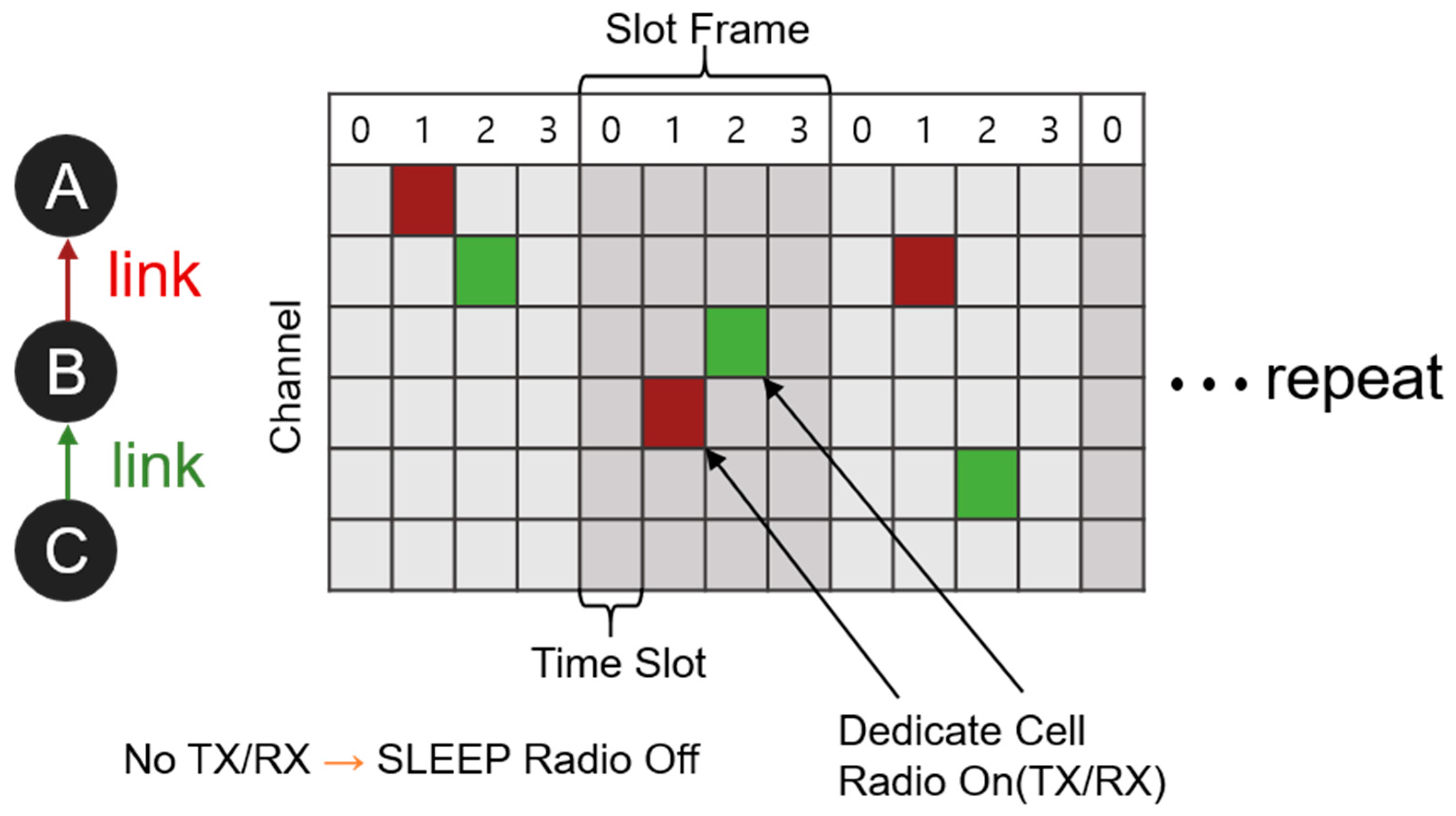


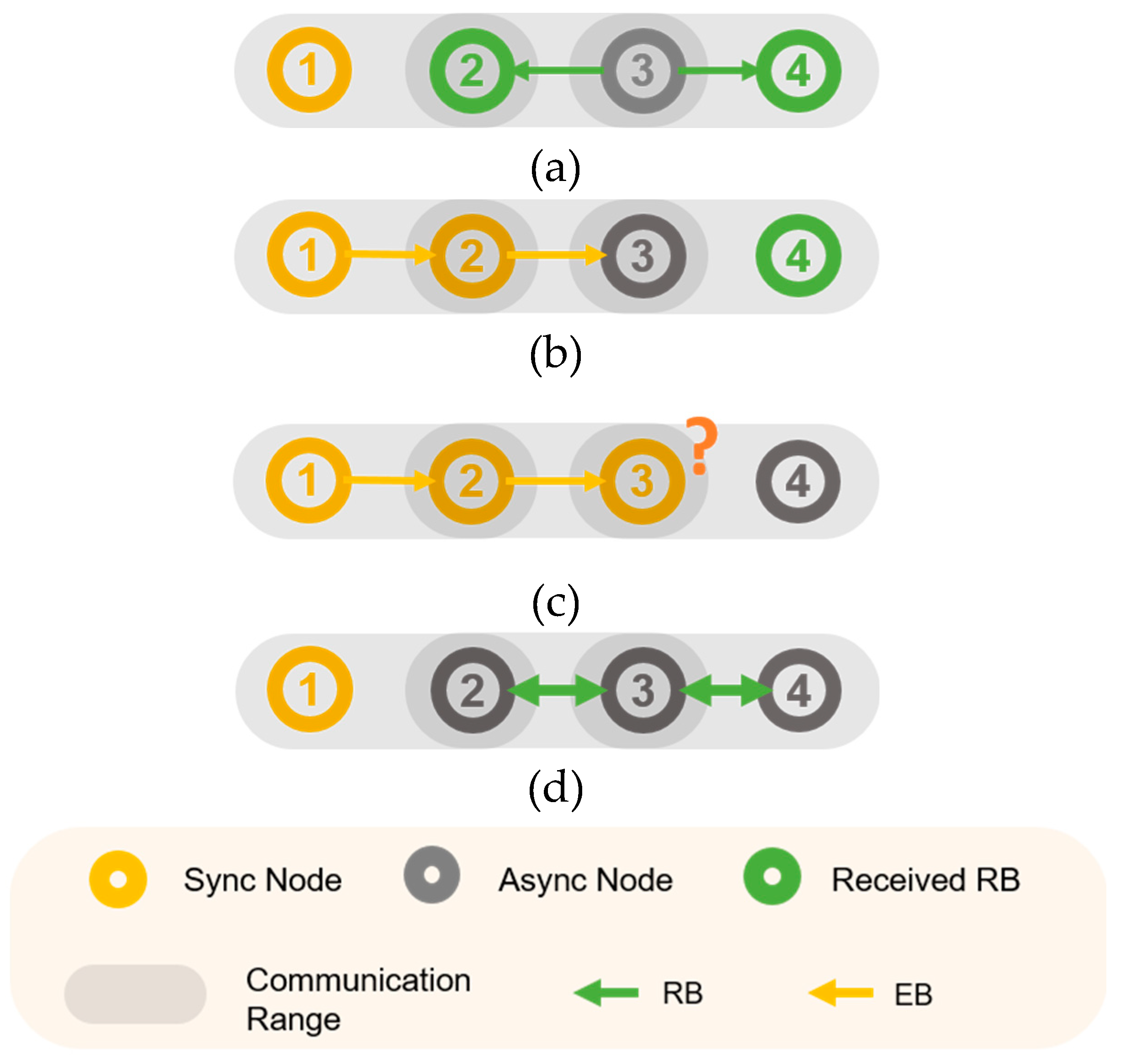
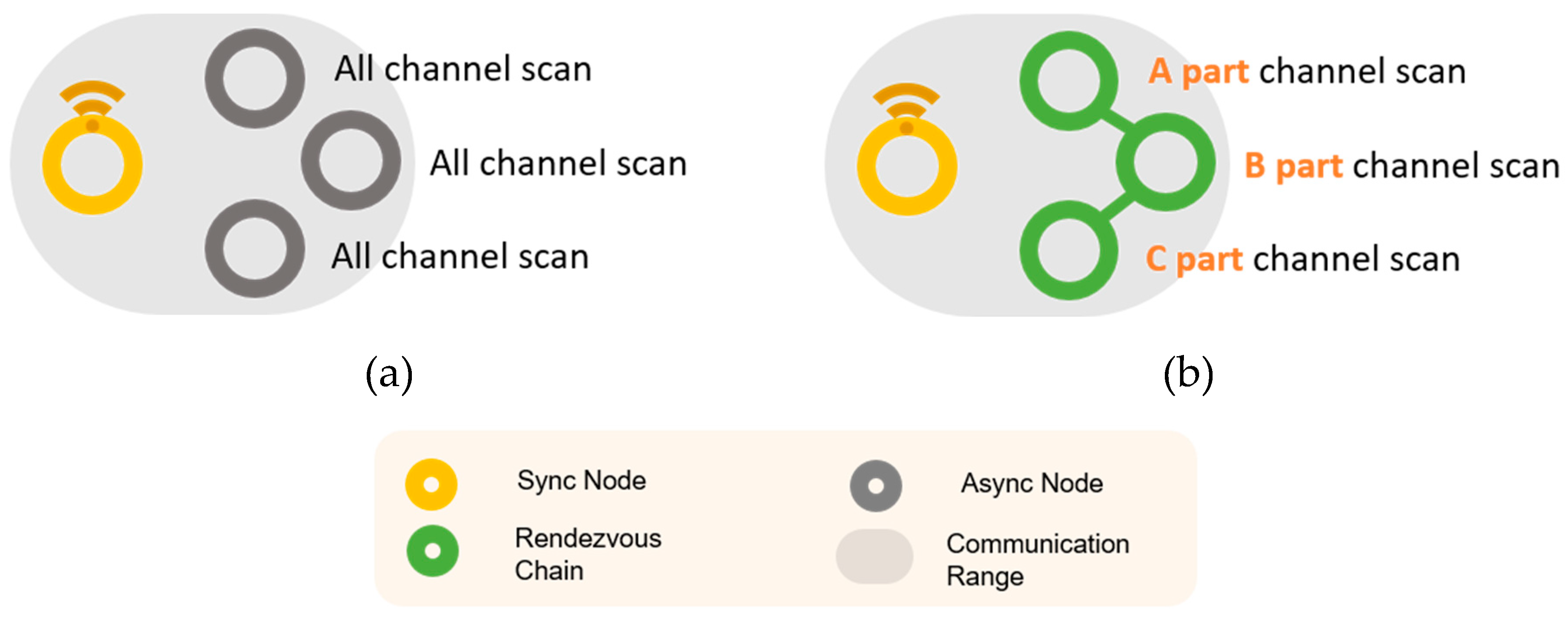
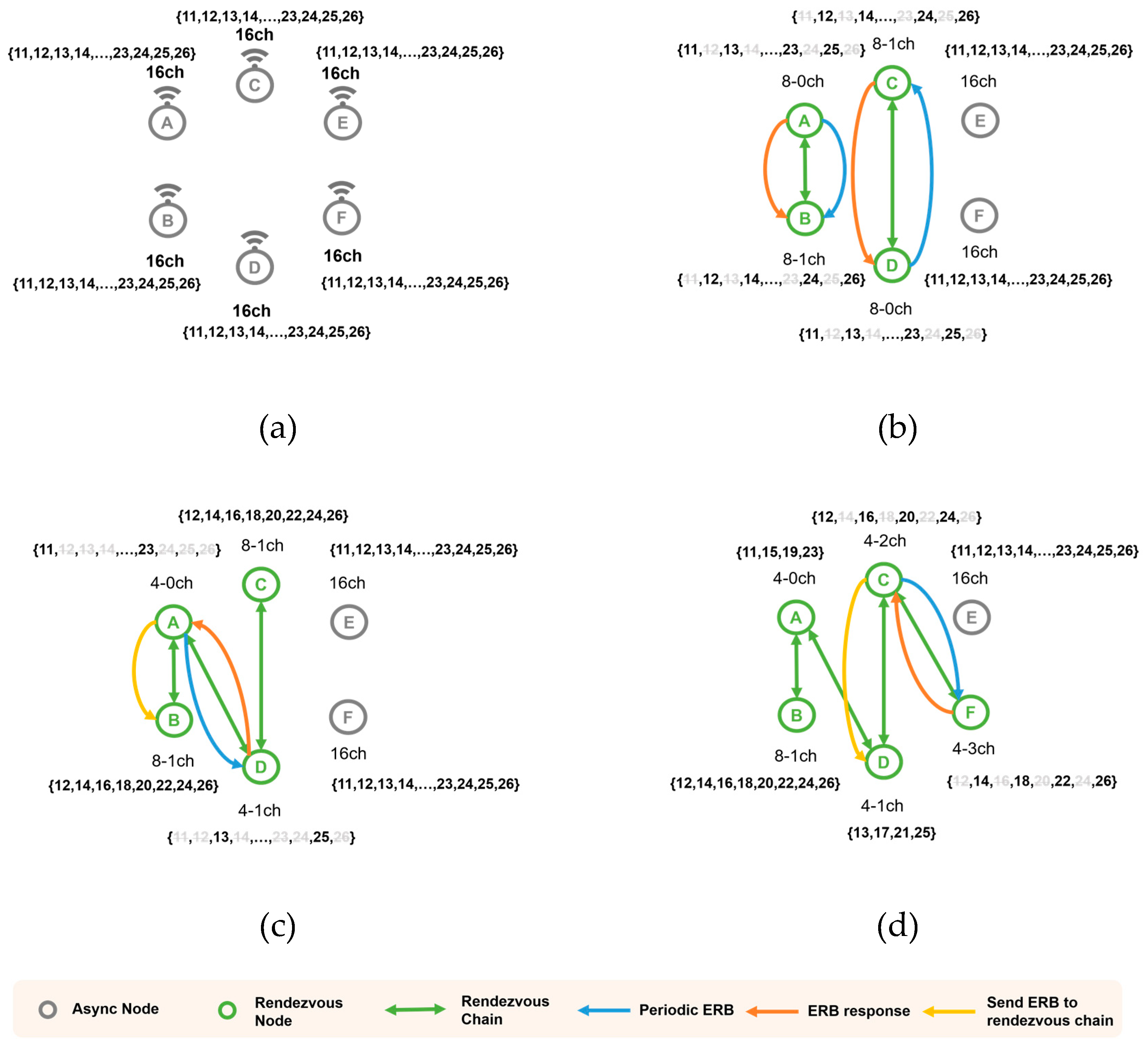
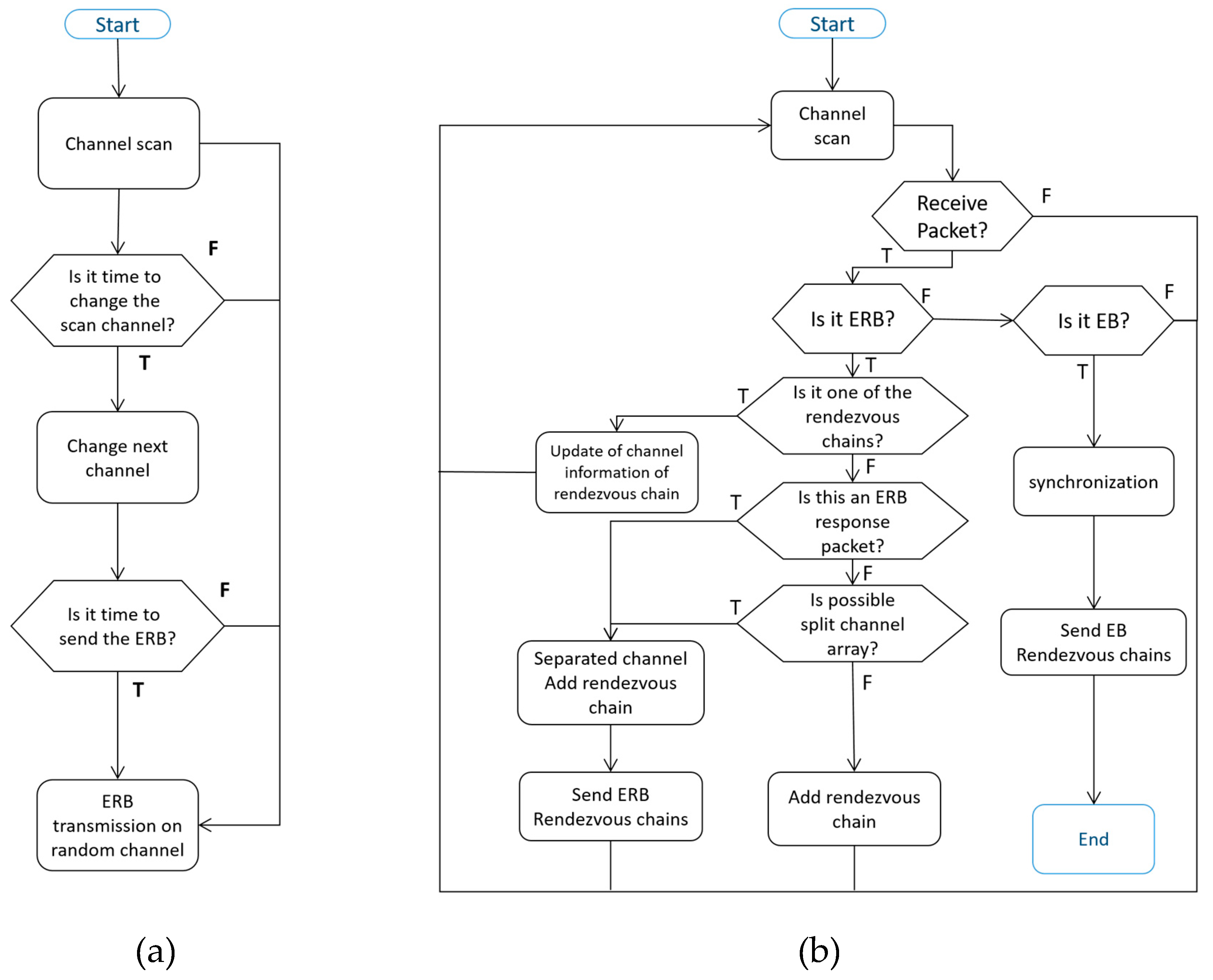
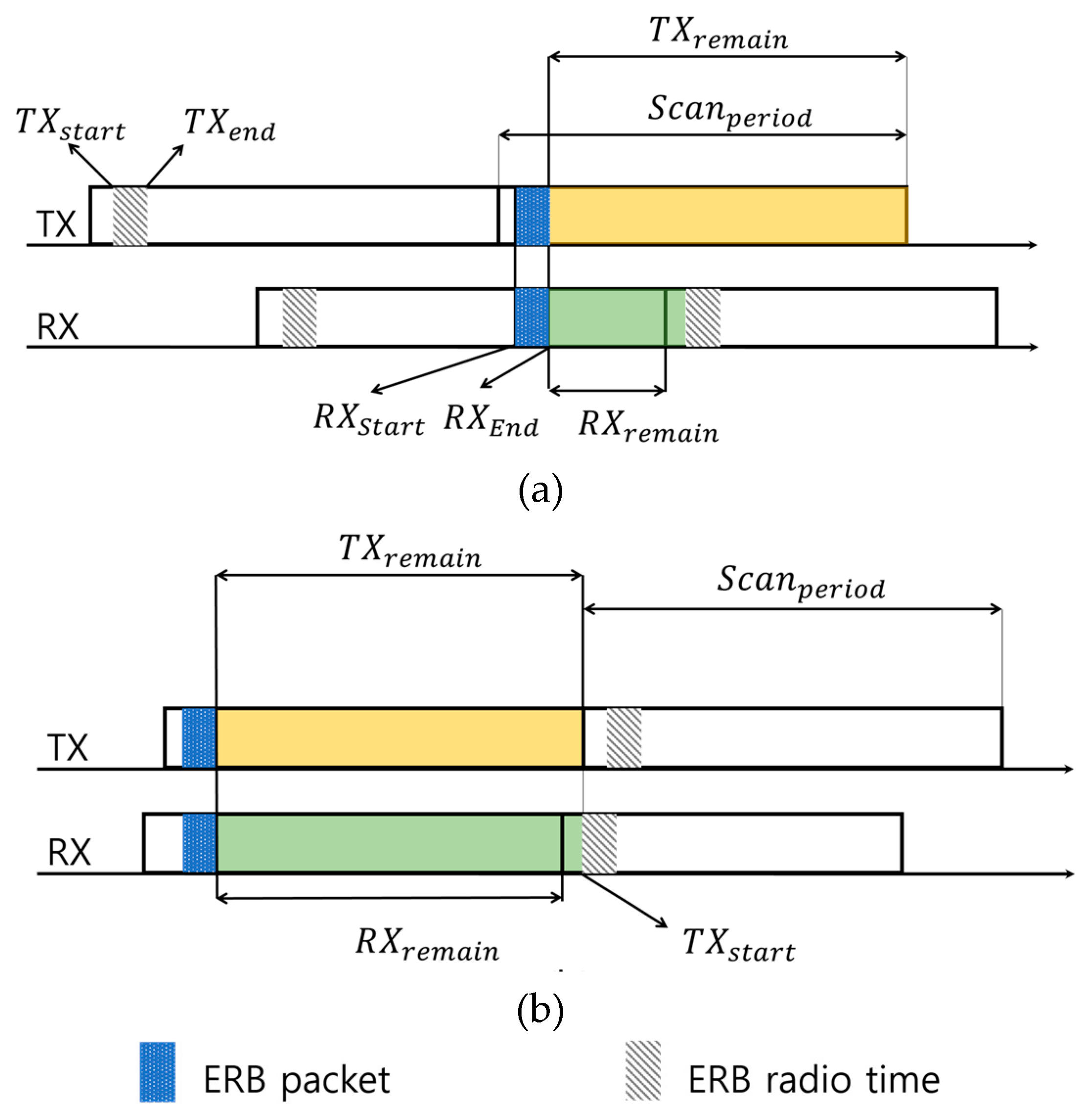
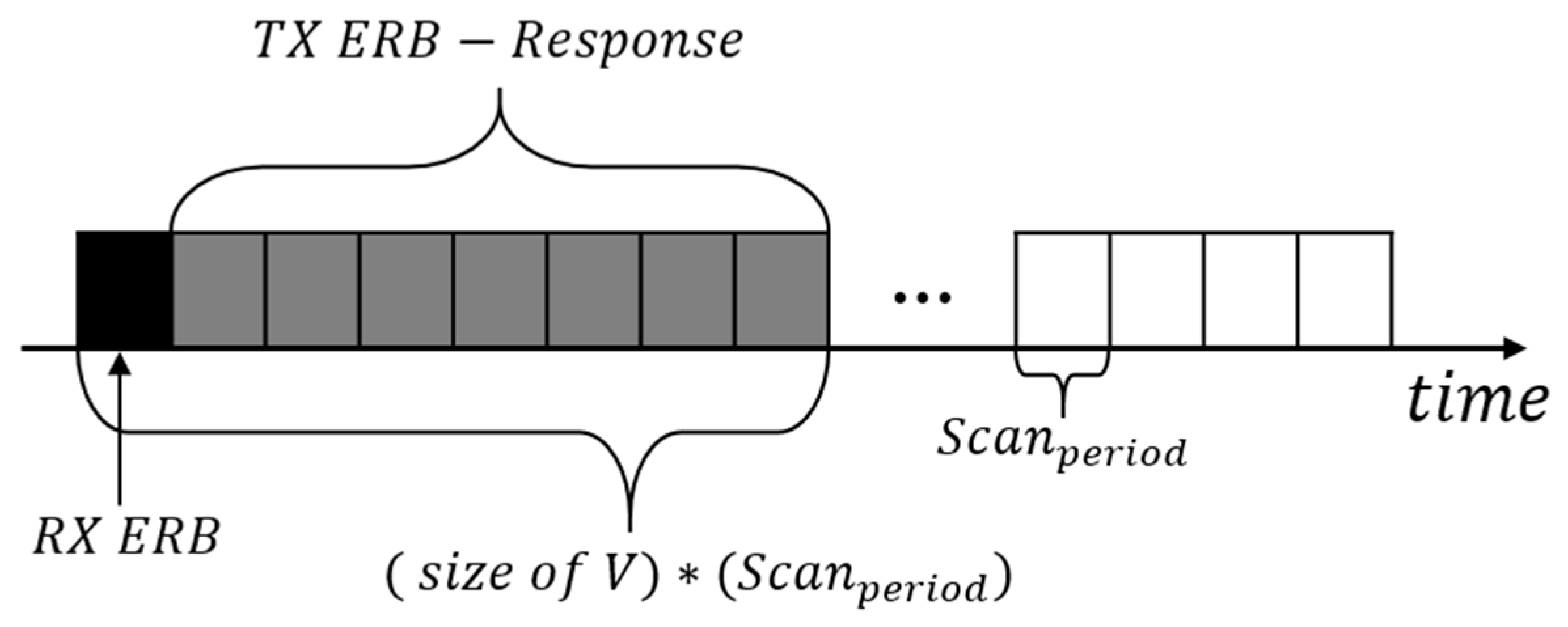
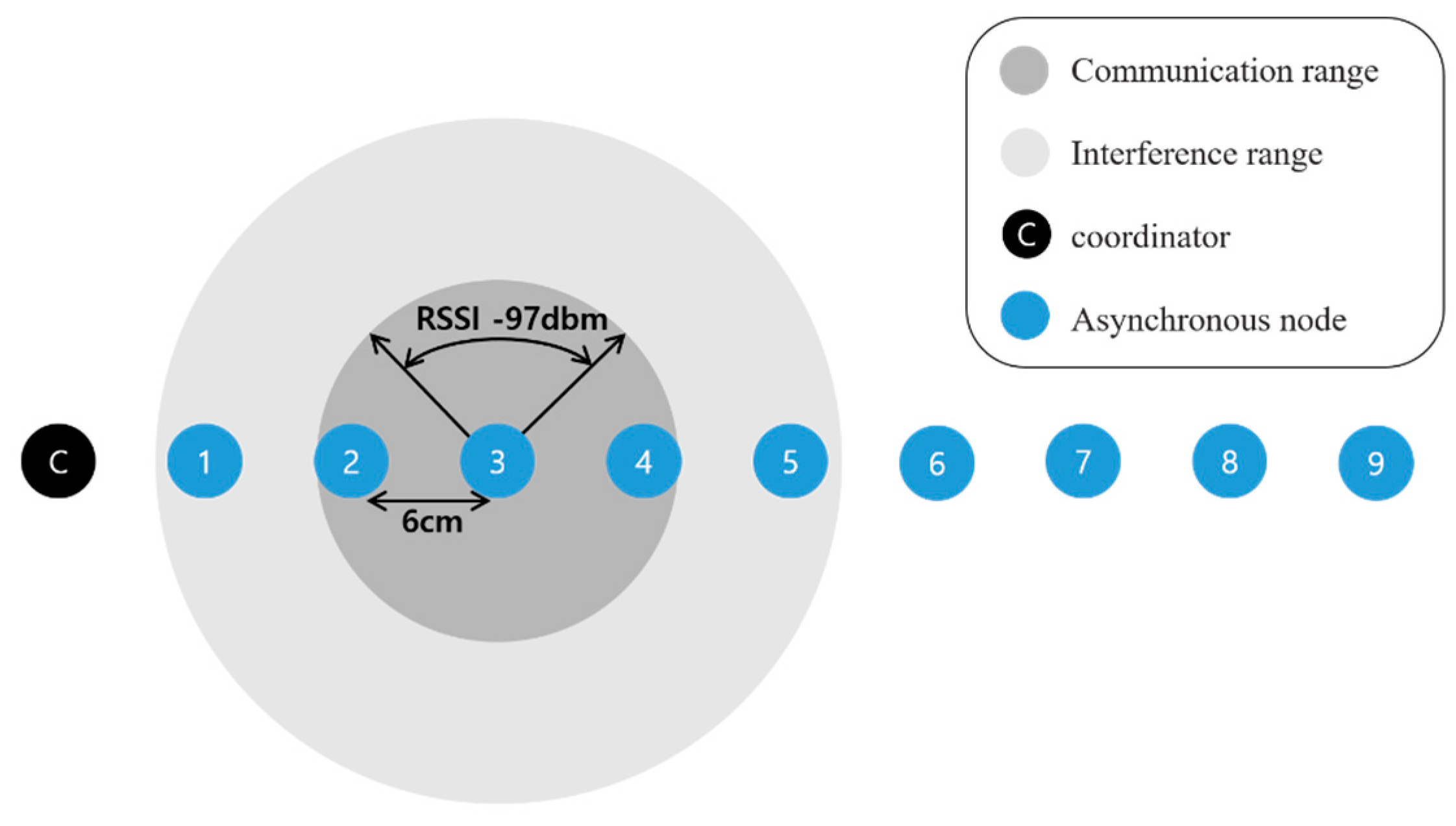
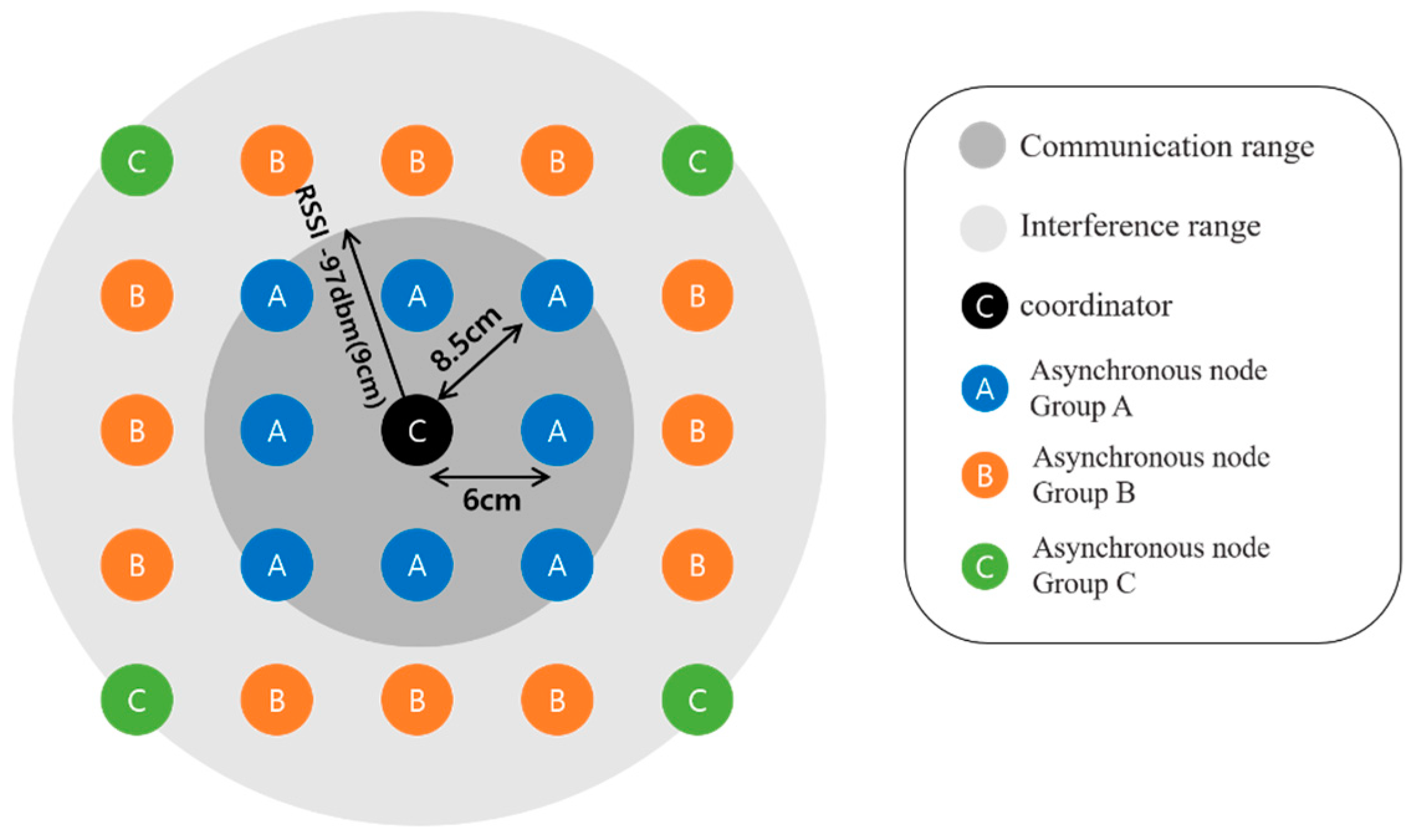
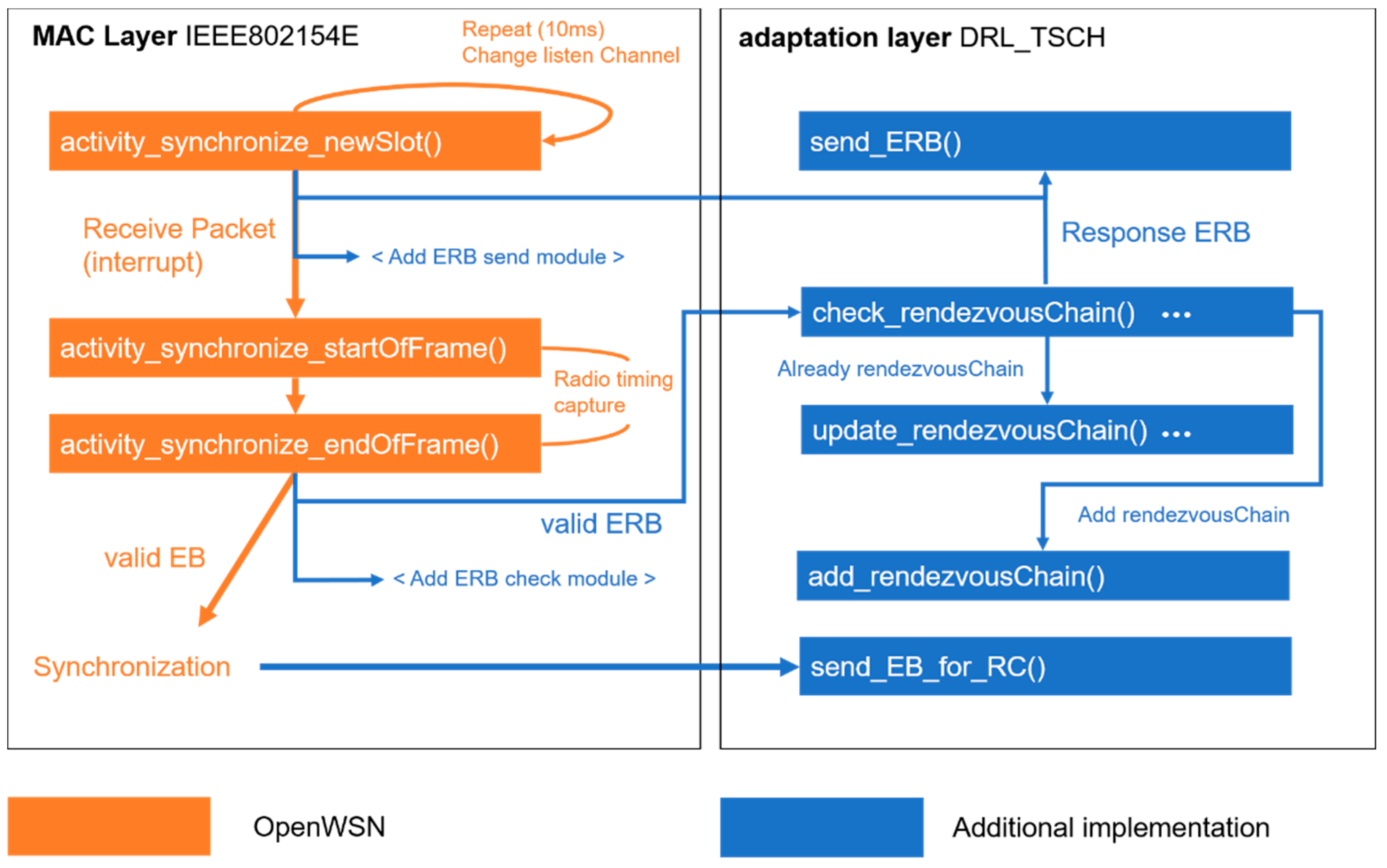
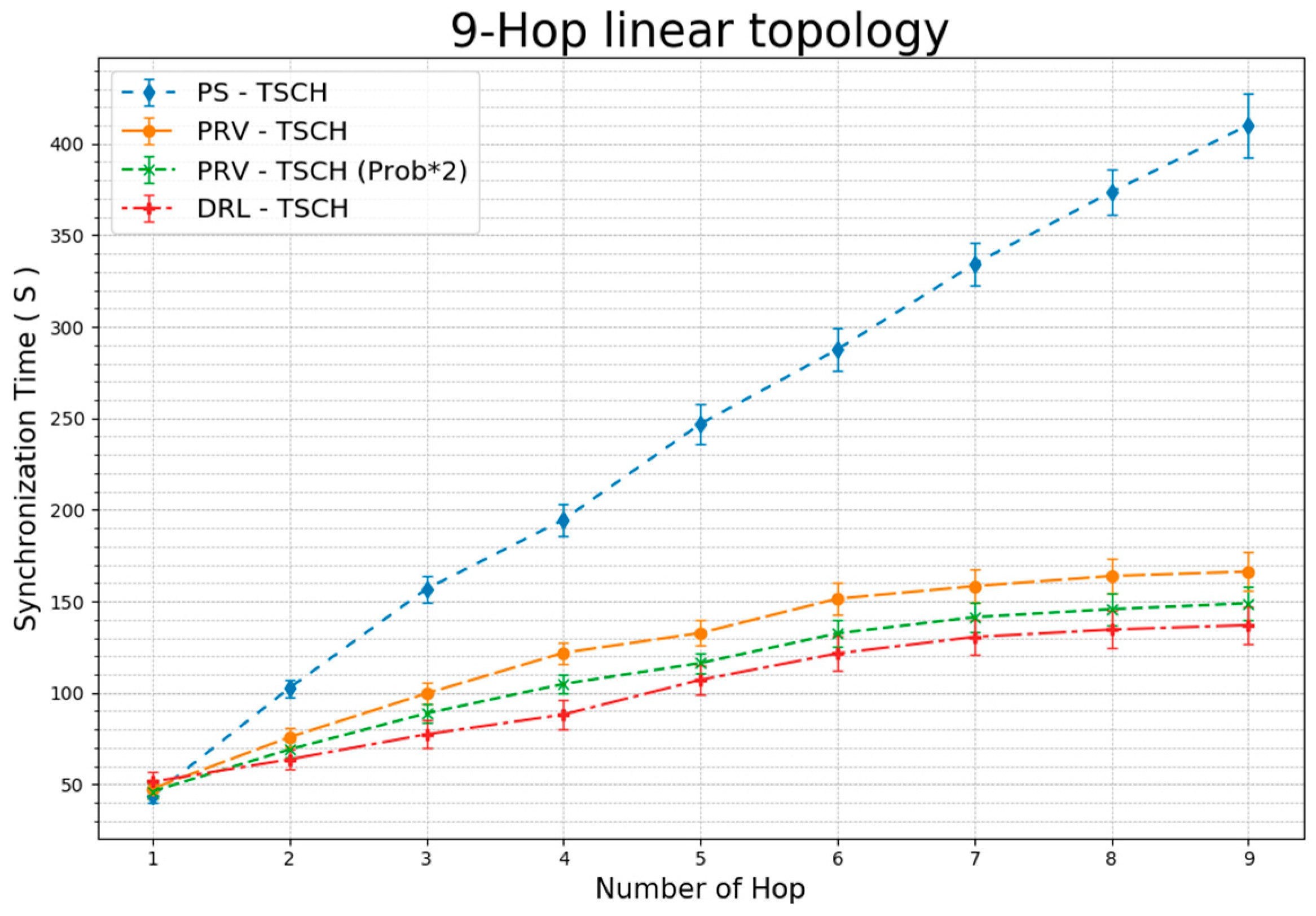
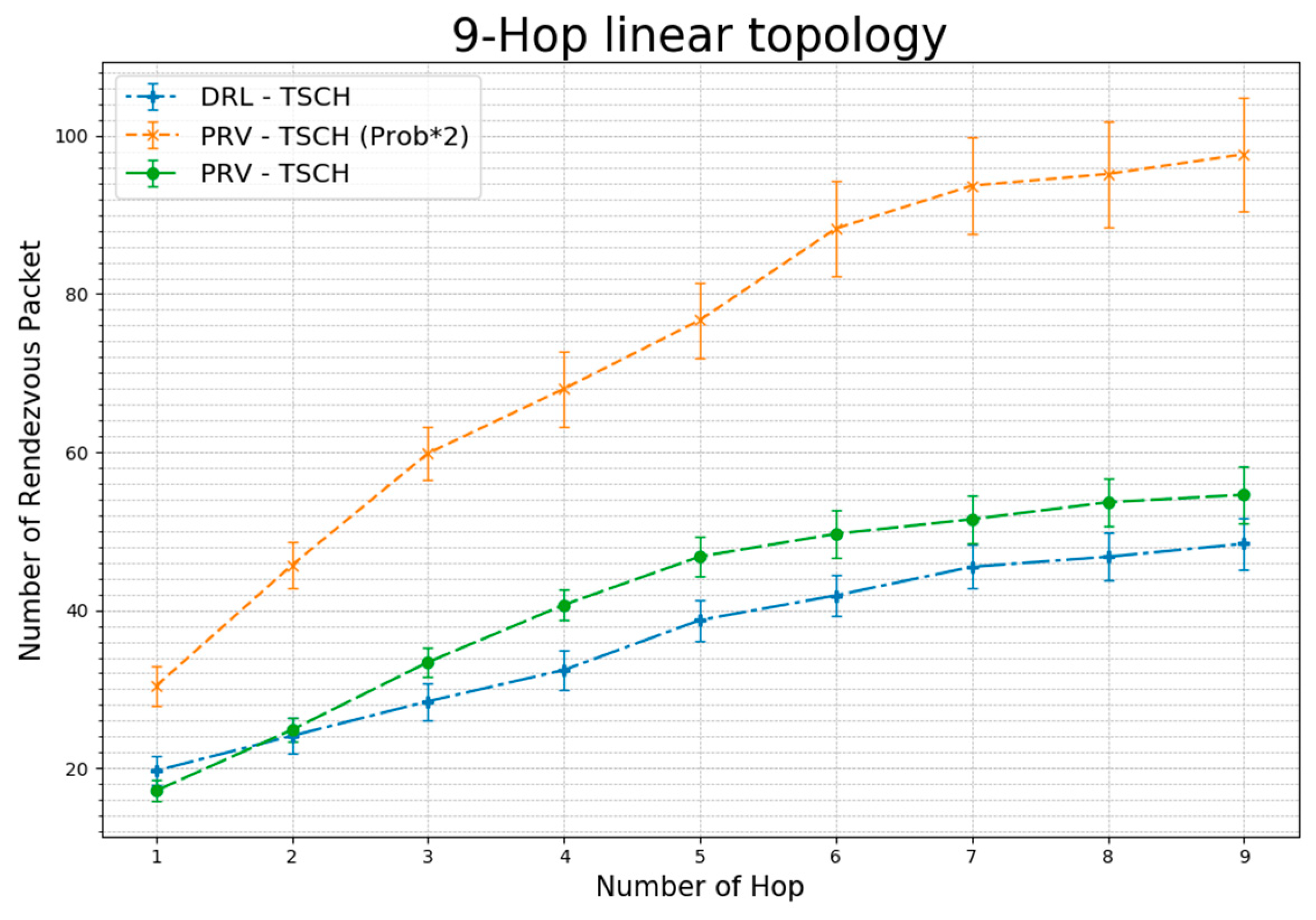
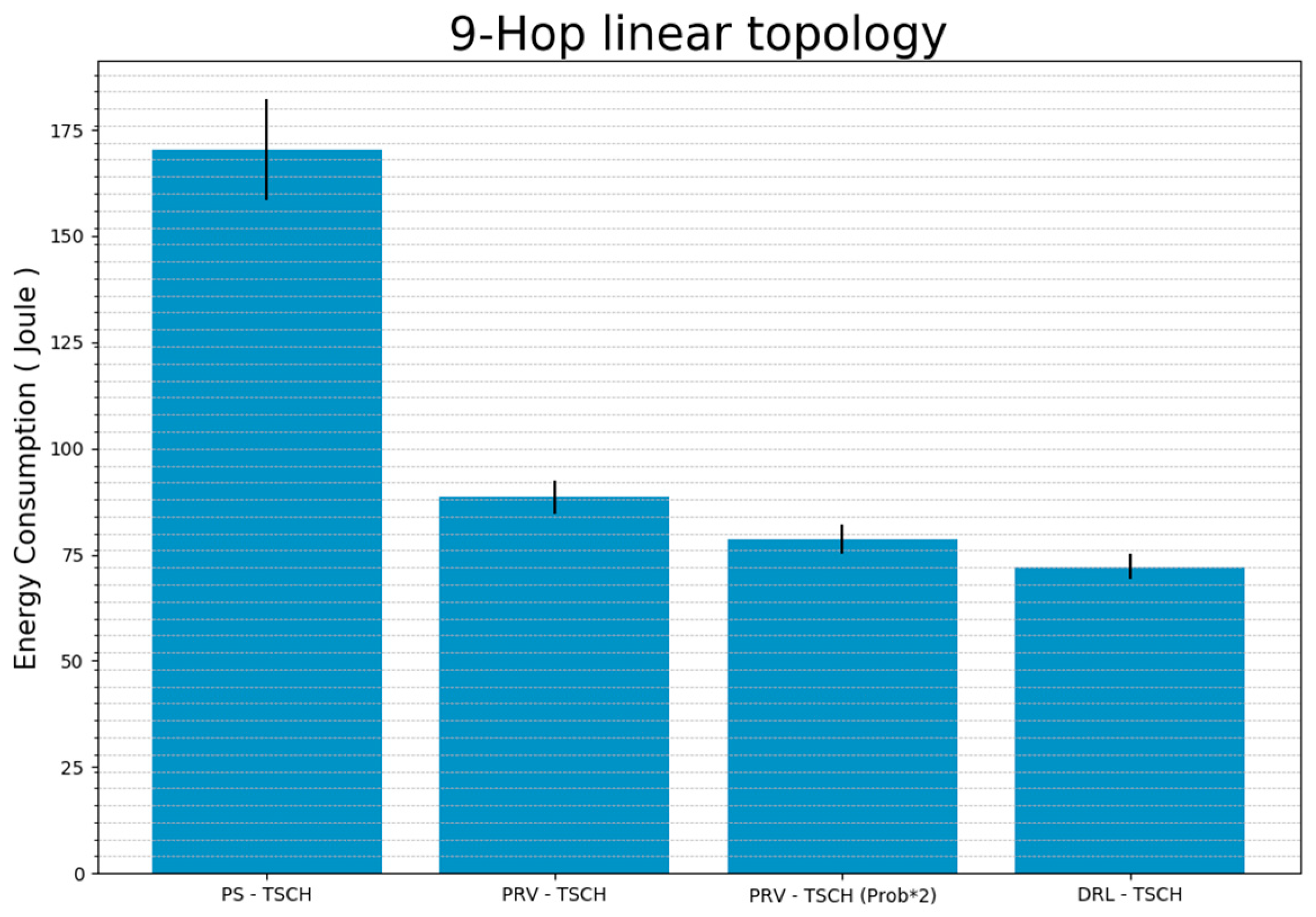
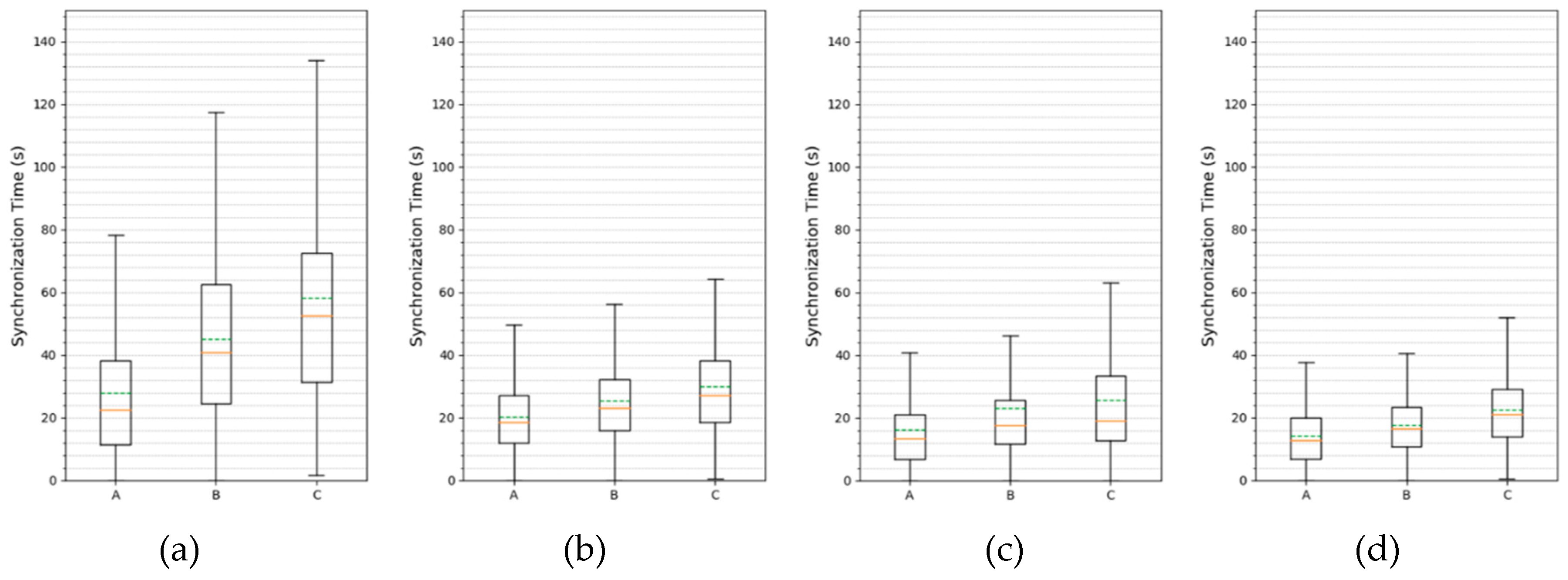
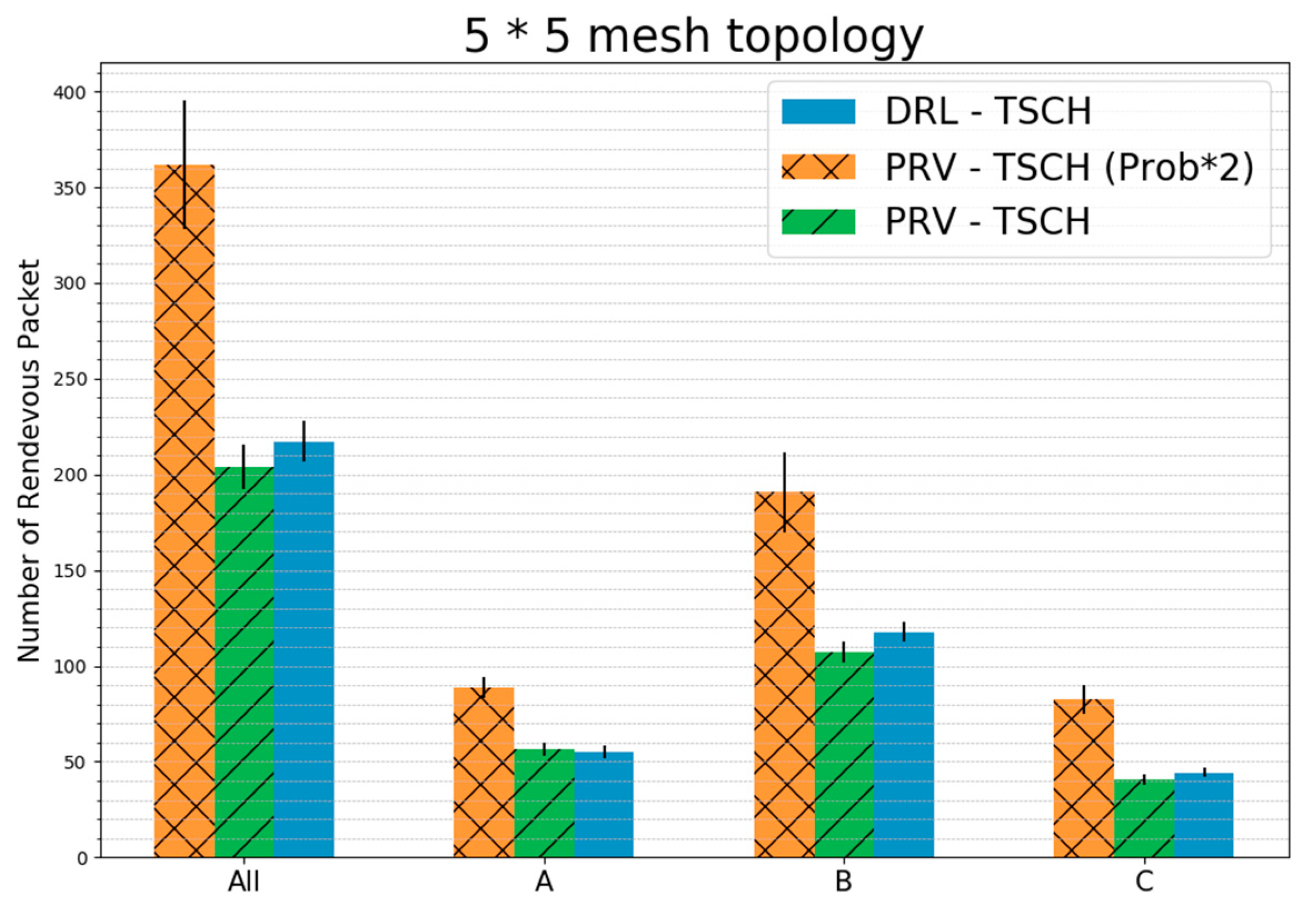
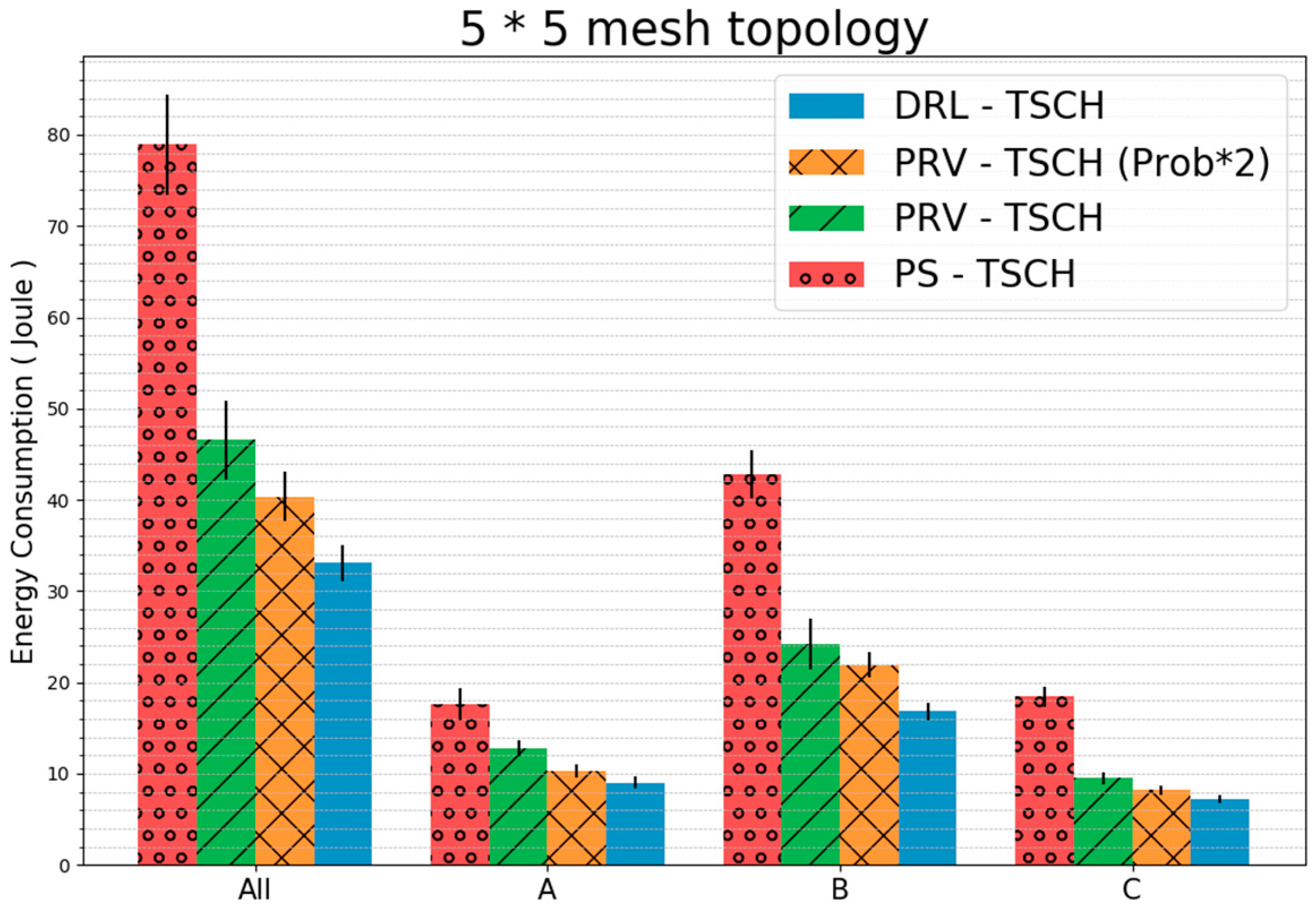
| Parameter | Value |
|---|---|
| run number | 100 |
| mote | Open Mote - cc2538 |
| RX sensitivity | −97 dbm |
| TX Power | 0 dbm |
| the number of channels | 16 |
| slot length / scan period | 10 ms |
| slot frame length | 101 slots |
| shared slot | 0th slot |
| EB transmit probability | 33% |
| rendezvous transmit probability | 33% / 66% |
| data rate | 250 kbps |
| antenna | none |
© 2020 by the authors. Licensee MDPI, Basel, Switzerland. This article is an open access article distributed under the terms and conditions of the Creative Commons Attribution (CC BY) license (http://creativecommons.org/licenses/by/4.0/).
Share and Cite
Bae, B.-H.; Chung, S.-H. Fast Synchronization Scheme Using 2-Way Parallel Rendezvous in IEEE 802.15.4 TSCH. Sensors 2020, 20, 1303. https://doi.org/10.3390/s20051303
Bae B-H, Chung S-H. Fast Synchronization Scheme Using 2-Way Parallel Rendezvous in IEEE 802.15.4 TSCH. Sensors. 2020; 20(5):1303. https://doi.org/10.3390/s20051303
Chicago/Turabian StyleBae, Byeong-Hwan, and Sang-Hwa Chung. 2020. "Fast Synchronization Scheme Using 2-Way Parallel Rendezvous in IEEE 802.15.4 TSCH" Sensors 20, no. 5: 1303. https://doi.org/10.3390/s20051303
APA StyleBae, B.-H., & Chung, S.-H. (2020). Fast Synchronization Scheme Using 2-Way Parallel Rendezvous in IEEE 802.15.4 TSCH. Sensors, 20(5), 1303. https://doi.org/10.3390/s20051303





